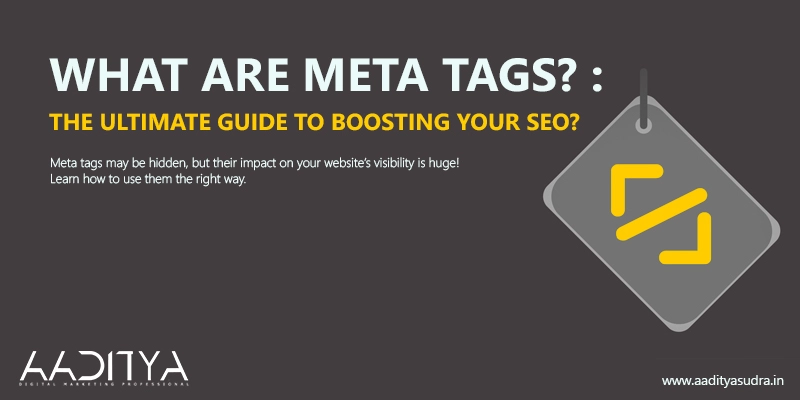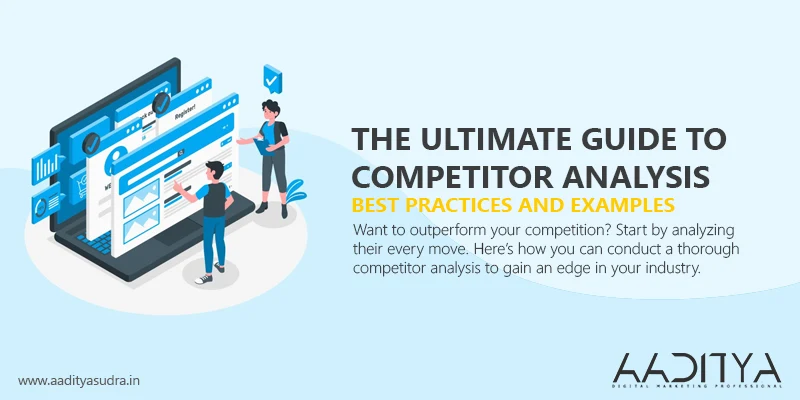What Are Meta Tags? The Ultimate Guide to Boosting Your SEO
Table of Contents
- Introduction
- What Are Meta Tags?
- Types of Meta Tags
- Best Practices for Meta Tags
- Common Mistakes to Avoid
- Conclusion
Meta tags may be hidden, but their impact on your website’s visibility is huge! Learn how to use them the right way.
Introduction
If you’ve dabbled in SEO, you’ve probably heard the term "meta tags." But what exactly are they, and how do they impact your website's ranking? Meta tags are little pieces of HTML code that communicate with search engines, helping them understand your website better. Think of them as the signposts for search engines, guiding them on what your content is about.
In this blog, we’ll break down the world of meta tags and show you how to use them effectively for SEO success!
What Are Meta Tags?
Meta tags are snippets of text added to your website's HTML that don’t appear on the page itself but are essential for search engines. They provide important information about your page's content, helping search engines like Google rank and display your site in search results.
Example: When you Google something and see a short description below each link, that’s the meta description at work!
Types of Meta Tags
There are a few key types of meta tags that you need to know about:
- Meta Title Tag: This is the title that appears in search results and on the browser tab. It’s the first thing users see, so make sure it’s catchy and includes relevant keywords.
- Meta Description Tag: This is the short snippet of text under the title in search results. It should be concise and persuasive to entice users to click on your link.
- Meta Robots Tag: These tell search engines whether to index your page or follow the links on it.
- Viewport Meta Tag: Essential for mobile optimization, this tag ensures that your website scales properly on different devices.
- Canonical Tag: This tag is used to avoid duplicate content issues by indicating the "main" version of a page.
Example: A good meta title for an article on “Top SEO Tips” could be “10 SEO Tips to Boost Your Website Traffic.” The meta description might be “Discover the best SEO strategies to increase your site’s visibility and drive organic traffic.”
Best Practices for Meta Tags
To get the most out of meta tags, follow these best practices:
- Keep Your Titles Under 60 Characters: Search engines truncate long titles, so make sure your most important keywords are within the first 60 characters.
- Write Engaging Meta Descriptions: Although Google doesn't always use the meta description you provide, when they do, it can make a big difference in your click-through rate. Aim for about 150-160 characters.
- Use Targeted Keywords in Titles and Descriptions: Always add your main keyword to both the meta title and description. But remember—don’t stuff it with keywords. Google frowns upon that!
- Write Unique Meta Tags for Every Page: Every page on your website should have a unique meta title and description. Duplicate tags can confuse search engines and harm your rankings.
- Focus on User Intent: Write meta descriptions that provide value and entice users to click, rather than just focusing on search engines.
Example: A meta description for a bakery's homepage might be: "Welcome to Sweet Treats Bakery, your go-to spot for delicious, freshly baked goods. Order online or visit us in-store today!" This is engaging, includes relevant keywords, and gives users a reason to click.
Common Mistakes to Avoid
While meta tags are crucial, many websites fall into common traps:
- Ignoring Meta Descriptions: Don’t skip this step! Even if Google rewrites it, a well-written meta description can still improve click-through rates.
- Duplicate Meta Tags: Avoid using the same meta tags across multiple pages as this can confuse search engines and lead to lower rankings.
- Keyword Stuffing: Don’t overload your meta tags with too many keywords. It makes your content look spammy and can hurt your rankings.
- Missing Meta Tags: Ensure that every important page has properly optimized meta tags to improve its chances of ranking well.
- Too Long Meta Descriptions: Descriptions longer than 160 characters will be cut off, so make sure to keep them concise and focused.
- Overlooking the Meta Robots Tag: If you don’t want search engines to index certain pages (like your privacy policy), use the meta robots tag to exclude them.
Example: If a website owner fills their meta description with keywords like “best bakery, bakery in town, cheap bakery,” it looks unprofessional and won’t get good results.
Small details can make a big impact – just like meta tags in SEO. - Aaditya Sudra
Conclusion
Meta tags might not be visible to your website visitors, but they play a crucial role in your site’s SEO. By optimizing your meta tags, you’ll not only improve your rankings but also boost your click-through rates and make a lasting impression on potential customers. Remember, meta tags may not directly impact rankings, but they play a crucial role in improving your site’s overall search performance.
Take the time to refine your meta tags, and you’ll see the results in no time!
Need help optimizing your meta tags for better SEO? Let’s work together! Visit my website or reach out today to improve your website’s visibility.
FAQ's
Oh, absolutely! They’re like the secret sauce of SEO—nobody sees them, but they make a world of difference.
That’s like wearing the same outfit to every event! You need to switch it up for each page to keep things fresh and relevant.
Yep, skipping meta descriptions is like going to a party without telling anyone who you are. Not ideal if you want to be noticed!
Just a few – don’t go cramming all your favorite keywords in there. It’s not a keyword buffet!
Don’t panic! You can always go back and edit them. It’s like correcting a spelling mistake—you’ll feel much better once it’s fixed!














No comment